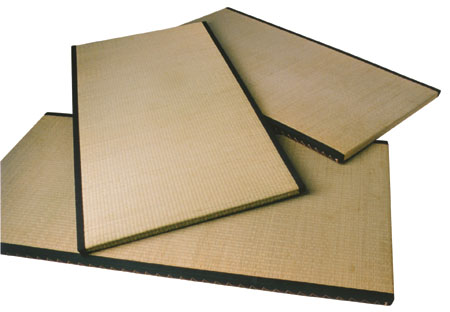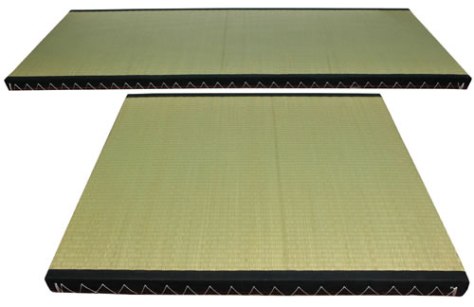May I have one … , please?
Category Archives: Mirai 2-054
Shoe storage cabinet げたばこ げんかん genkan entrance
Kitchen 台所 だいどころ
Kitchen 台所 だいどころ
What to say about a Japanese kitchen? Well, quite a lot really. There are a few major differences that Japanese kitchens share with their “western” counterparts. If you quickly scroll up and down, you would notice some things in common between all these pictures:
- You cannot see outside.
- The neon light is on all day long.
- The string with the bead to switch on the light.
- The bars on the windows (where to go in case of fire?)
- The dining table in the middle.
What you cannot see in the picture, but what you do experience when in Japan: the absence of men in the kitchen. It is a woman’s domain. Having said that: we know of a couple (the man was a high powered courtroom judge), where the man would come home later at night and he would cook dinner for the whole family (teenager family) and she would sit on a chair next to the counter and talk to him about all sorts of household matters, life in general, sometimes about what she had happened in the neighbourhood, but most of all “the meaning of life”. He was an amazing cook and she loved it.
This picture has all the ingredients mentioned above. But the place has a friendliness and a homeliness and a cleanliness next-to-none. This is the kitchen where a happy housewife lives and – let’s face it – if Mum’s happy, the family is happy!
This is a more modern kitchen, but you can see that the within-arms-reach has already moving in. It is the practicality of every day.
This kitchen still has a more old-fashioned, but really practical trough sort of kitchen sink.
A brand-new, unused kitchen and yet bars and opaque glass. It’s a pity that this arrangement is often the result of the Japanese need for security and privacy.
Looks very homely, clean, welcoming, really… quite practical. Still: bars, opaque, neon light-with-string and bead… This photo demonstrates another more subtle but perhaps essentially Asian, if not Japanese, difference: all the small crockery. Each little dish must be in a separate bowl, cup, or dish.
The western idea “put it on a large plate and cover it with an all-covering meat sauce” is just not present. Japanese cooks do have sauce (teriyaki sauce is one to die for!). It is the idea, that tastes should be separate at least until after the tongue, when they are joined in the stomach. What’s the point of having taste buds, if it is all stirred together? Now there’s a point! Japanese ONE, western NIL.
A homely kitchen where Mum can work efficiently surrounded by her favourite things.
The large kitchen sinks are a practical part of a kitchen.
The microwave lives here; the reheat ”ovenette”, the rice cooker, the hot water jug, the rubbish sorting bins. They’re all there.
Note that Japan has the American power supply set-up: 110V with two prongs on the plug.
Extractor fan or range hood.
And now we come to the major difference that the photos don’t show; the older kitchens have a lived-in feeling: Mum’s home. The modern kitchen has an emptier look; Mum’s at work. Dad and Mum can both work long hours and that must be very stressful. Teenage children can be at “juku“, so it all adds to stress. If it is an extended family, Grandma may do the cooking, so it would be her domain and her preferences that would matter.
The modern Japanese family will often buy in the cooked food on the way back from the office, re-heat it in the microwave, or they would simply eat out. Maybe that it is not such a Japanese difference, but more a “new generation” difference as also in western society more and more people eat out. Cooking has become more of a “hobby” for many, but not a necessity for all.
Another fact of life is that the average Japanese family is four: Dad, Mum and two children, so a large kitchen is less important and with even smaller families that would be even more true. Maybe larger children’s bedrooms is a more practical need. Who knows.
Don’t worry too much about your kitchen set-up though. It’s the heart that beats in the kitchen that matters.
Entrance 玄関 げんかん genkan
It is polite as a service staff member to lower yourself to the client;
particularly if the client is an elderly person. Good manners.
See also getabako げたばこ
Rubbish-recycling ごみ リサイクル りさいくる
gomibako ごみばこ rubbish bin
Rubbish has become such a huge problem for the Japanese. Their love of wrapping and making things presentable and renewing things and having things looking fresh and clean and cheerful means that there is an awful lot of wastage and rubbish. Once upon a time the rubbish tips were gigantic. Now as space is more at a premium and seepage is a problem in landfills, governments and councils have to move to solve enormous problems.
Almost all rubbish gets sorted these days and it has to be said that Japanese citizens are most conscientious about sorting household rubbish into neat piles and bags for disposal.
Still, there is much work to be done and recycling is becoming more organised and essential. Japanese people are also beginning to change their attitude as well. Once upon a time second-hand was inferior, dirty and untouchable. Now young people lead the charge with “cheap”, “working perfectly fine”, “usable” and “readily available and cheap”.
Public places are also being cleaned up; beaches, parks, forests etc. Although Japanese public places are usually quite clean, particularly if you consider the number of people that are there. One particular problem which has haunted Japanese and hounded them was smoking. Cigarette butts everywhere. Those days have been numbered and smoking in public places is now more a thing of the past. Where once upon a time staffrooms were filled with smoke and fans were working overtime to suck the stench out, these days staffrooms are relatively clean and fresh as no one smokes there anymore.
But then there are the sneaky ones: the sneaky dumpers. Mind you, if you get caught, you are surely going to feel the penalty – not nice.
Youngsters spreading the message.
Mothers for Muck
Enough is enough!
Recycle them things and clean up!
Neighbourhood mothers are here hard at work doing sterling work.
The new trend:リサイクルショップ
Tatami たたみ
Tatami たたみ
Note the standard size of tatami. This means that all rooms in a house must be designed according to standardised measurements, otherwise the tatami wouldn’t fit. Rooms are measured according to the number of tatami in the space: six-tatami room, four-and-a-half-tatami room etc. The counter for tatami is jō じょう.
The soft green colour indicates that these are new tatami. With age they discolour to brown. Of course, after a few years one could turn the tatami mats upside down, so you have another lease of life out of your flooring. We wonder if it would be possible to turn western carpet upside down for another few years of usage?! There’s an idea!
Often people put (news)paper directly under the tatami just to cut out any small draughts.

Try not to walk on the edges as this would speed up wear and tear.

にほんま nihonma 日本間
or
わしつ washitsu 和室
Japanese-style room

eight-tatami room
There is a standardised pattern for laying out tatami.
or
わしつ washitsu 和室
Japanese-style room

eight-tatami room
There is a standardised pattern for laying out tatami.
The little square on the left is where the hibachi would be, should the owners wish to have a traditional Japanese tea ceremony. Furniture would be moved out of the way and zabuton could be brought in to sit on. Of course, the room could also be used for futon.
A mixture of the modern and the traditional. The square under the table could be removed to show an enclosed pit, in which one could dangle the legs when sitting at the table. (See kotatsu).
These days hard foam is an easy substitute
ざいす zaisu
chair for tatami matting
Interesting internal link


























































































































